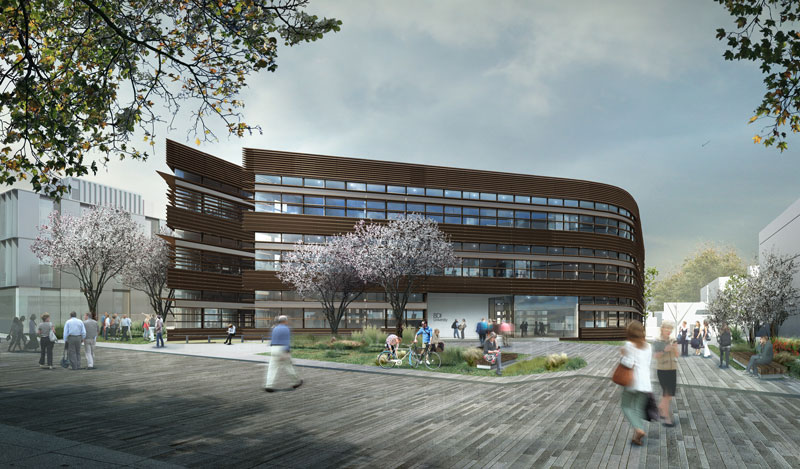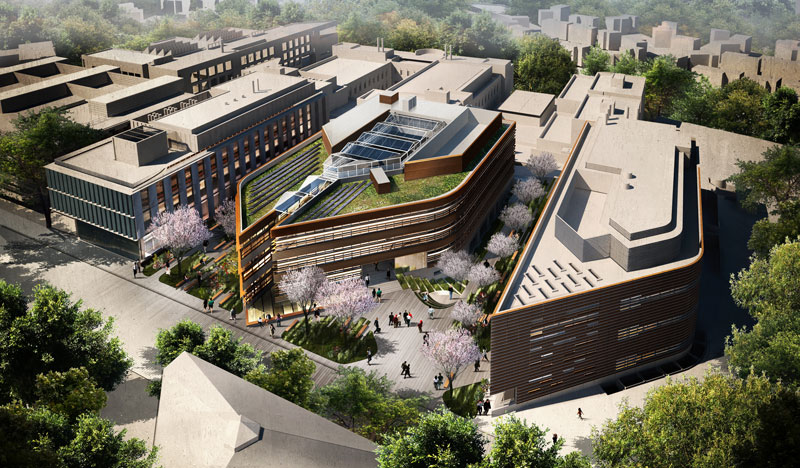- Share
- Like
- Tweet
- Digg
- Tumblr
- VKontakte
- Love This
- Odnoklassniki
- Meneame
- Blogger
- Amazon
- Yahoo Mail
- Gmail
- AOL
- Newsvine
- HackerNews
- Evernote
- MySpace
- Mail.ru
- Viadeo
- Line
- Comments
- SMS
- Viber
- Telegram
- Subscribe
- Skype
- Facebook Messenger
- Kakao
- LiveJournal
- Yammer
- Edgar
- Fintel
- Instapaper
- Copy Link
Make Architects have recently revealed their approved design for the newest addition to Oxford‘s Old Road Campus, the Big Data Institute (BDI). The state-of-the-art data center will store, analyze and process vast amounts of health-related digital data, with the aim of providing new insights into illness and treatments worldwide.

Image © Make Architects
The Big Data Institute will be built next to two other Make buildings, the Kennedy Institute of Rheumatology and the NDM Research Building. The new building will use the same underlying design principles, namely a masonry plinth, four storeys of accommodation, a single-storey height main entrance and set back roof top plant.
The composition of the facade reveals three key elements of the building: orientation, entrance and internal function. These three principles led to a facade that appears more open along the north, and more solid along the south and west elevations to respond to solar gain.
We are excited to have gained planning for our fifth building for the University of Oxford. Part of the Park Hospital masterplan, the project will deliver a brand new public space for the campus and will allow people to gather, socialise and relax. Internally the innovative open plan spaces, lecture theatres and large expressed high-powered computing hall are gathered around a grand reading space forming the ultimate heart of the building.
– Justin Nicholls, Make Partner and lead project architect
Make’s proposal includes a new external public space as part of the entrance, in addition to enhancing the existing spaces outside the NDM and Kennedy Institute. The new landscape design acts as a social hub, creating a perfect balance between formal and informal public spaces. As part of the sustainability strategy for the building, a labyrinth is located beneath the lower ground floor which draws in air through the light well and uses the thermal mass of the ground to cool it, before circulating it to the main roof top plant room. This air is then distributed via floor plenums as part of an assisted natural ventilation strategy and extracted via the atrium using the stack effect.

Image © Make Architects
The top-lit covered atrium allows natural light deep into the building and provides both visual and physical connections to the seminar rooms, data storage facilities and server area, in addition to its primary function as a reading room space. The interior features an exciting, innovative approach to academic buildings with a predominantly open plan layout supplemented with cellular offices and a mixture of differing break-out spaces, each with their own character and ambience.
*All images and information courtesy of Make Architects.
